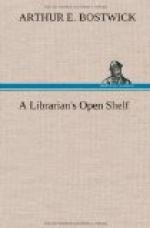These are all trite things to say to churchmen: I have tried, on occasion, to say them to non-churchmen, but they do not seem to respond. There are those who rejoice in their break with historic continuity, who look upon a written form of service with horror. It is well, as I have said, for us to realize that our friends hold these opinions. One can not strengthen his muscles in a tug of war unless some one is pulling the other way. The savor of religion, like that of life itself, is in its contrasts. I thank God that we have them even within our own Communion. We are high-church and low-church and broad-church. We burn incense and we wear Geneva gowns. This diversity is not to be condemned. What is to be deprecated is the feeling among some of us that the diversity should give place to uniformity—to uniformity of their own kind, of course. To me, this would be a calamity. Let us continue to make room in our church for individuality. God never intended men to be pressed down in one mold of sameness. In the last analysis, each of us has his own religious beliefs. The doctrines of our church, or of any church are but a composite portrait of these beliefs. But when one takes such a portrait throughout all lands and in all time, and the features keep true, one can not help regarding them as the divine lineaments.
This is how I would have you regard the beliefs of our church, as you have studied them throughout this course—as our particular composite photograph of the face of God, as He has impressed it on the hearts and minds of each one of us. I commend this view to those who have no reverence for beliefs, particularly when they are formulated as creeds. These persons mean that they have no regard for group beliefs but only for those of the individual. Each has his




